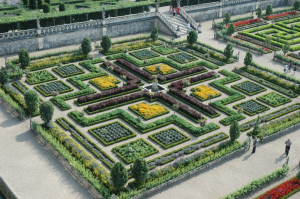Farewell, Vin de Pays du Jardin de la France…hello IGP/Vin de Pays Val de Loire!
French wine laws, along with the wine laws of many members of the European Union, continue to evolve. While consumers are still apt to find their favorite place-names and AOC terms on their favorite wine labels, many “behind the scenes” revisions took place in 2009.
The entry level of French basic wine, formerly referred to as vin de table, is now known simply as vin. Basic French “Vin” can come from anywhere in France and has few specific regulations apart from those required for health, safety, and commercial trade. Vin is not a particularly important category in France, as it accounts for only about one-eighth of all French wine produced, and most French vin is consumed locally.
The next tier of French wine was formerly known as country wine (vin de pays), and it accounts for more than one-third of French wine. In the new EU system, these are considered table wines with geographical indication (PGI). The wines may be varietally labeled, and may use the term Indication Géographique Protégée (IGP), the traditional “Vin de Pays,” or a combination, as in “IGP–Vin de Pays.”
There are few restrictions on these wines, except that at least 85 percent of the grapes must come entirely from within the boundaries of one of the 152 delimited Vin de Pays regions. At this level, French wine seems more focused on grape variety than on region of origin – and, in many cases, this allows these wines to compete directly with the consumer-friendly varietally labeled wines of the New World.
There are five large regional IGPs:
- IGP/Vin de Pays d’Oc, perhaps the best known of the regions, covering the Languedoc-Roussillon region.
- IGP/Vin de Pays Val de Loire, covering the entire Loire Valley, was formerly known by the lovely title Vin de Pays du Jardin de la France.
- IGP/Vin de Pays Comtés Rhodaniens includes portions of the Northern Rhône Valley, Jura, and Savoie.
- IGP/Vin de Pays de Méditerranée, covering southeast France.
- IGP/Vin de Pays Comté Tolosan, covering southwest France.
Two other regional Vin de Pays designations, Vin de Pays de l’Atlantique, covering Bordeaux and Charentes (Cognac), and Vin de Pays de Gaules for the Beaujolais region, were also approved in 2007, but have been disputed, and remained unpublished in the Official Journal of the European Union.
There are fifty-two departmental IGPs whose boundaries match the political boundaries of a French département (“county”), located within the larger regional IGP areas. Another ninety-plus IGPs, known as vin de pays de zone, are smaller, locally specific areas, often named after a historic or geographical feature.
Thankfully, the terminology and titles of most of your favorite French AOCs remain the same…but you might be seeing the term “AOP” replace “AOC” as time goes by.
The changes in the status of the Vin de Pays are some of the many wine-world updates you can find in SWE’s new, improved, and updated CSW Study Guide, to be released in September 2013.
Post authored by Jane A. Nickles, CWE – your SWE Blog Administrator bevspecialist@societyofwineeducators.org

